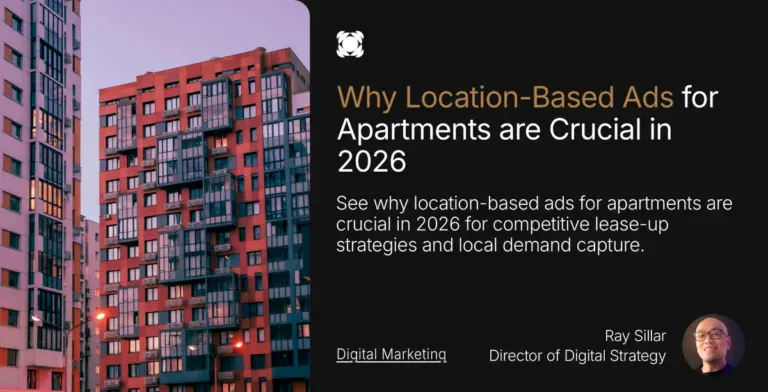In the digital age, eCommerce has emerged as a powerhouse in the business world, providing a platform for entrepreneurs and established businesses to reach a global audience. However, building and maintaining an e-commerce website involves more than creating a virtual storefront. It’s essential to understand the various e-commerce website costs associated with eCommerce website development and how to calculate and manage these expenses.
This comprehensive guide will break down the key components of eCommerce website costs.
Different types of eCommerce Websites
There are various types of eCommerce websites, each tailored to specific business needs and customer interactions. The key eCommerce types covered include:
Business-to-Consumer (B2C): These websites are designed for businesses to sell products or services directly to individual consumers, focusing on user-friendly interfaces and secure payment gateways.
Business-to-Business (B2B): B2B e-commerce platforms streamline business transactions, offering features like bulk ordering, customized pricing, and account management tools.
Consumer-to-Consumer (C2C): C2C platforms connect individual consumers looking to buy or sell products or services, often operating as online marketplaces with user-generated listings.
Consumer-to-Business (C2B): In C2B e-commerce, individual consumers offer their products or services to businesses, typically seen in freelancing and crowdsourcing scenarios.
Mobile Commerce (M-commerce): M-commerce involves e-commerce transactions through mobile devices, leveraging mobile apps and features like mobile wallets for on-the-go shopping.
Breakdown of ecommerce Website Cost
Selecting the right platform is just one of many crucial considerations for figuring out how much an eCommerce website will cost your company. WooCommerce and Magento are free, while Shopify is a paid platform with a three-day free trial.
Ecommerce Website Hosting Costs
Along with the domain, the hosting you choose for your eCommerce website will be one of the primary ongoing expenses. A few main options to consider:
Shared Hosting:
Shared hosting provides website storage and bandwidth on a server shared with other accounts. It is the most budget-friendly hosting option, with plans starting around $5-25 per month. Shared hosting works for most small eCommerce sites but has limited resources. As your site grows, you may experience slow load times, downtime, or security risks on crowded shared servers.
VPS Hosting:
VPS (Virtual Private Server) hosting gives you a virtual server partitioned from a physical server. Prices range from around $20-100 per month. VPS plans offer more resources than shared hosting, with the ability to scale bandwidth and storage as needed. VPS hosting can accommodate higher-traffic small business eCommerce sites.
Dedicated Hosting:
Dedicated hosting provides an entire physical server for your site only. It offers the highest performance and most resources at $70-500+ per month. Dedicated servers are ideal for enterprise-level eCommerce sites with very high traffic volume. Most small to medium-sized businesses don’t require a dedicated server.
When evaluating hosting plans, be sure to factor in your traffic needs, site security, uptime guarantees, and scaling capabilities. Select a hosting provider that can accommodate your eCommerce site’s growth over the coming years.
eCommerce Web Design
The cost of your eCommerce website’s design can vary drastically depending on your approach. Here are the main options:
Custom Design
A custom eCommerce web design built from scratch specifically for your brand and products can cost between $10,000 and $50,000 on average. This involves a designer creating completely custom page layouts, graphics, product pages, and more tailored to your business needs. The benefit is you get an entirely unique eCommerce site, though the high cost makes it only viable for larger budgets.
Template Customization
Many eCommerce platforms like Shopify offer templates you can customize yourself or with a designer’s help. Template customization costs between $500 and $3,000 typically. This approach lets you get a professionally designed layout with some branding and content changes to suit your store. The budget is mid-range.
DIY Website Builders
For the lowest budget option, you can use a DIY website builder like Shopify, Wix or Squarespace. Their built-in templates are free to slightly expensive at around $30 per month. While very affordable, the tradeoff is having a templated site like others on that platform. The design options are more limited.
Ecommerce Web Development Costs
The development costs for an eCommerce website can vary greatly depending on the complexity of the site and the features required. Here are some of the main development expenses to factor in:
Custom Development
For a highly customized eCommerce site built from the ground up, development costs can easily reach $50,000 to $70,000 or even more. The effort involved in designing custom interfaces, integrating various services, building advanced functionality like product configurators or custom calculation engines, and ensuring top-notch performance and security is significant.
Complex B2B or enterprise sites with advanced personalization and predictive analytics capabilities will be on the higher end of this range.
Integrating Third-Party Services
Most eCommerce sites must integrate third-party services and platforms like payment gateways, shipping carriers, tax calculators, CRM systems, and marketing tools. Typical integration costs range from $1,000 to $5,000 per integration.
The more systems you need to connect, the higher the development effort will be to build and maintain those integrations over time as APIs and functionality change.
Bugs and Maintenance
Budgeting for ongoing bug fixing, site maintenance, and minor enhancements after launch is essential. These development costs typically range from $2500 to $5,000 per month.
As the site grows and more customers use it, new issues requiring debugging and patches will emerge. You’ll also likely want small new features or design changes implemented over time. Having an ongoing maintenance budget is crucial.
Add-Ons & Extensions
Integrating additional services and capabilities to an eCommerce site through third-party add-ons and extensions is common. This allows merchants to easily add features like shipping management, customer relationship management (CRM), and marketing tools.
Shipping Integrations
Shipping management add-ons integrate with major carriers like USPS, FedEx and UPS to calculate real-time shipping rates, print labels, and track packages. Popular shipping integrations include ShipStation, Shippo, and ShipWorks. These services range from $49 to $299 per month, depending on volume and features.
CRM Integrations
CRM tools like Mailchimp, Klaviyo, and Omnisend can be connected to eCommerce platforms to manage contacts, send emails, and track customer data. Prices for eCommerce-focused CRM integrations start around $59 to $99 per month.
Marketing Integrations
Extensions like email marketing, popups, and live chat can be added to boost marketing and conversion rates. There are many free marketing integrations, but more advanced tools can cost $50 to $99 per month.
The right combination of add-ons provides an eCommerce site with expanded features and functionality without the need for extensive custom development. When calculating total costs, merchants should factor in potential monthly fees for the add-ons most important for their business.
Business Costs
Running an eCommerce business incurs ongoing operating costs beyond just launching a website. Some key business costs to factor into your eCommerce budget include:
Inventory
- Product inventory can cost anywhere from $5,000 to $50,000+ to initially stock, depending on your product selection, order quantities, and whether you manufacture or purchase finished goods.
- Plan for ongoing inventory replenishment costs as you sell through your stock. Manufacturing costs, shipping costs, duties, and storage fees all impact inventory expenses.
- Consider carrying costs for storing inventory long-term. The space, labor, insurance and taxes involved in warehousing add up.
Marketing
- Marketing costs typically range from $2500 to $5,000+ per month for most eCommerce businesses.
- Digital ads, email marketing, SEO, and content creation all require continuous investment.
- Marketing drives sales, so see it as an ongoing operating cost, not a one-time expense.
Total Costs of an eCommerce Website
The total costs of launching and running an eCommerce website can vary tremendously based on the size and scope of the business. Here are some rough estimates for low, medium and high-end setups:
Basic-range Website Cost
For a very basic eCommerce site, you may be able to get up and running for as little as $3000-$5,000 if you use cheap or free website builders, shared hosting, free payment gateways, minimal design work, and no paid staff. This is only feasible for extremely simple sites with low inventory and transaction volume.
Mid-Range Website Cost
A typical small to medium-sized eCommerce business can expect to invest around $10,000-$30,000 to launch their website. This would cover the costs of customized template website design, VPS hosting, paid payment gateways, integrating some 3rd party services, hiring staff and developers, purchasing initial inventory, and allocating the marketing budget.
Enterprise eCommerce Website Cost
Enterprise eCommerce websites with huge product catalogues, high traffic volume and complex functionality can require over $50,000-$500,000+ in upfront and ongoing costs. Custom platform development, dedicated servers, inventory warehousing, large marketing budgets, and sizable teams of developers, designers and support staff all contribute to the costs of running a large-scale eCommerce operation.
The range in total costs demonstrates how eCommerce expenses correlate closely with the size and revenue potential of the business. Assessing your specific goals and requirements is key to projecting an accurate total cost of ownership.
Conclusion
In conclusion, the total costs of launching and running an eCommerce website are as diverse as the eCommerce landscape. To succeed in this digital age, businesses must embrace technology and understand the financial commitment required to build and maintain a robust online presence.
As eCommerce continues to shape the future of retail, staying informed and flexible in the face of evolving costs will be vital to long-term success. By carefully assessing your goals, needs, and resources, you can chart a course for your eCommerce venture that maximizes its potential for growth and profitability.
Blacksmith Agency has helped many organizations increase their sales and customer base by providing eCommerce solutions. Contact Blacksmith Agency for eCommerce web solutions.









